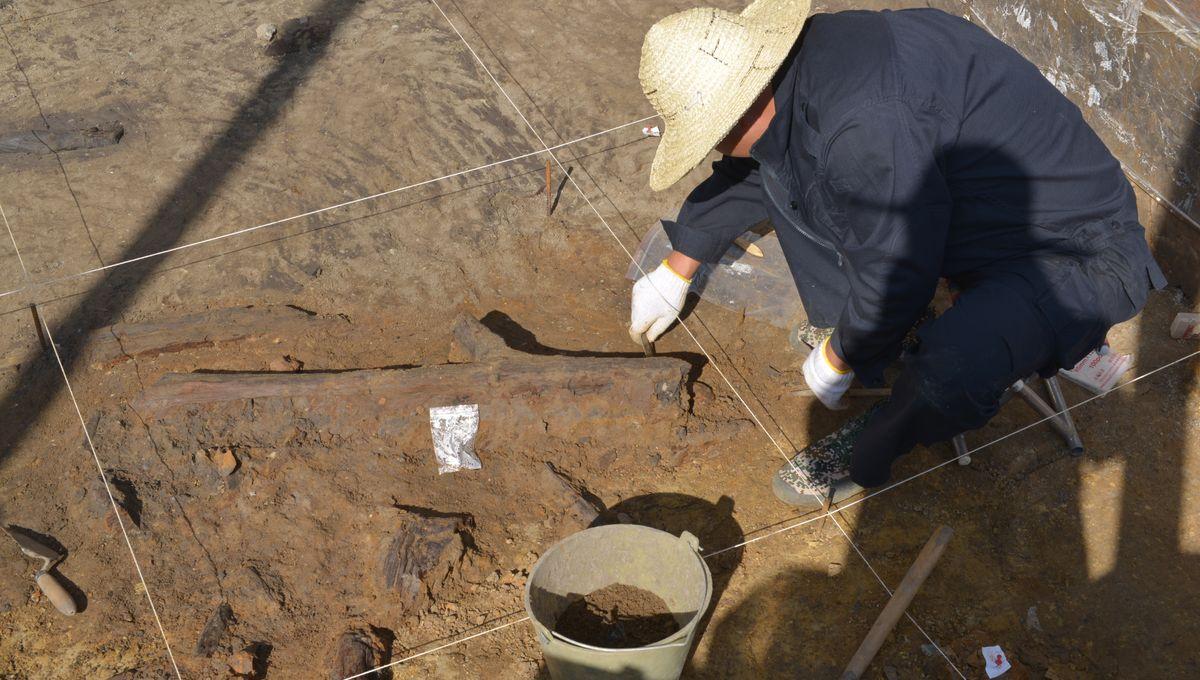-
Web sayfası bildirimcisi
- EXPLORE
-
Sayfalar
-
Blogs
-
Forums
300,000-Year-Old Wooden Tools “Made By Denisovans” Discovered In China

300,000-Year-Old Wooden Tools “Made By Denisovans” Discovered In China
A remarkable collection of wooden tools dated to around 300,000 years ago has been discovered at an archaeological site in southwest China. Specially designed to harvest vegetation, the assemblage reveals how prehistoric hominids in this subtropical environment relied heavily on plants for their diet, while also highlighting the surprising technological skill of East Asian humans at a time when the region was supposedly inhabited by primitive communities.
“Around 300,000 years ago in Europe you had the Middle Palaeolithic [when stone tool technology advanced rapidly], but in East Asia there’s very little change in stone artifacts until the arrival of modern humans 40,000 to 45,000 years ago,” said Professor Bo Li, author of a new study about the discovery. The assumption was therefore that technological innovation had been lagging in this part of the world, “but this discovery really revolutionizes our understanding of the technique and the cultural industry of Paleolithic East Asia,” he told IFLScience. The collection of wooden artifacts was unearthed at a lakeside site called Gantangqing and includes 35 items showing clear evidence of shaping and use by humans, with whittling marks and intentionally smoothed surfaces and knots found on many of the relics. Applying cutting-edge dating methods to calculate the age of feldspar minerals in the surrounding sediment, the study authors determined that the tools were manufactured between 361,000 and 250,000 years ago. Unlike other Pleistocene wooden artifacts, these tools were used for foraging, not hunting. Image courtesy of Bo Li Mostly made of pine – with a few hardwood exceptions – the tools include large digging sticks and smaller, hook-like implements that may have been used for slicing through plant roots. Such finds are incredibly rare due to the fact that wooden artifacts decompose and therefore tend not to appear in the archaeological record. Denisovans co-existed with Neanderthals in Siberia and made very sophisticated stone tools like Neanderthals – so there's no question that they are smart, they are intelligent, they are advanced. Prof Bo Li Of the few Pleistocene wooden items that have been discovered, the majority are hunting weapons – including the tip of a 400,000-year-old spear from Clacton-on-Sea in England and the famous Schöningen spears from Germany, which are 200,000-300,000 years old. Yet the researchers write that “Gantangqing presents a scenario of early hominin subsistence in subtropical and tropical environments that is plant-oriented, in contrast to northern temperate environments such as Schöningen, where the hunting of large mammals is clearly dominant.” “Our results suggest that hominins at Gantangqing made strategic utilization of lakeshore food resources. They made planned visits to the lakeshore and brought with them fabricated tools of selected wood for exploiting underground tubers, rhizomes, or corms,” continue the study authors. “As such, the Gantangqing assemblage shows the likely use of underground storage organs and the importance of plant foods in early hominin diets in a subtropical environment,” they add. Some of the tools featured curved edges that may have been used for slicing through roots. Image courtesy of Bo Li As for the more intriguing question of who made the tools, Bo Li says that “the most likely candidate is Denisovans.” “More and more Denisovan [fossils] are being discovered in East Asia, including the newly defined Harbin fossil, which is more than 150,000 years old,” he says. “We also have Denisovans from the Tibetan Plateau more than 190,000 years ago, Penghu in the Taiwan region – which is also very old, and also in Laos. All this evidence suggests the so-called middle Paleolithic period of time in East Asia was most likely occupied by Denisovans.” Regarding the cognitive and technological capabilities of our ancient sister lineage, Bo Li explains that “Denisovans co-existed with Neanderthals in Siberia and made very sophisticated stone tools like Neanderthals – so there's no question that they are smart, they are intelligent, they are advanced.” Based on the types of plant remains found in and around the site, the researchers suggest that the wooden tools may have been used to harvest kiwis, nuts, and various types of tubers. The study has been published in the journal Science.



